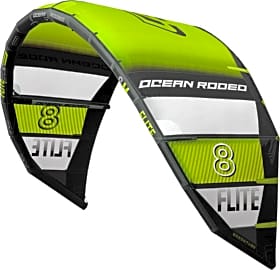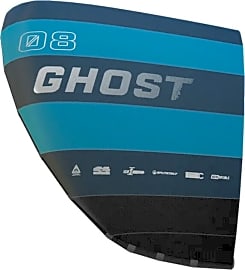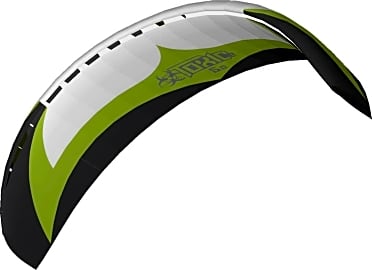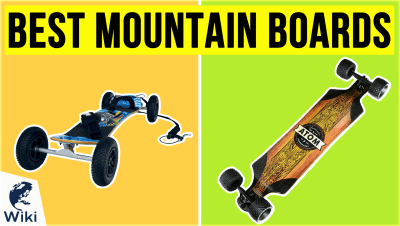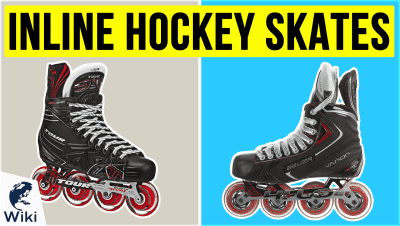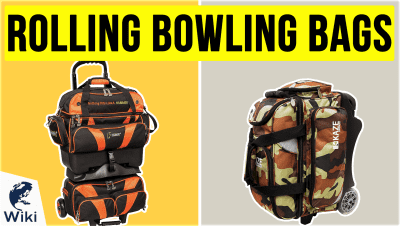The 7 Best Power Kites

This wiki has been updated 41 times since it was first published in January of 2016. Few outdoor activities offer the kind of thrill that comes from being pulled along by power and traction kites. Designed to provide a significant pull, these models can act as the propulsion source for sports like kitesurfing and landboarding, but can be fun to fly even without a board. However you use yours, though, make sure you do so safely, in an open environment and with protective gear. When users buy our independently chosen editorial choices, we may earn commissions to help fund the Wiki.
Editor's Notes
July 05, 2020:
For starters, it's important to acknowledge that there are an enormous amount of safety concerns when using a power kite. Unless you're a trained pro or at least a very experience participant in kitesurfing or mountainboarding, it's best to make sure you're on a flat surface (land or water, depending on the kite), and that there are no power line around. You'll also want to outfit yourself with a helmet and other safety gear, and ensure that you're well-versed in your kite's safety mechanisms.
Looking over our previous list, we had included a number of sport kites alongside power options, including training kites and stunt kites. This time around, we wanted to whittle it down to purely represent the power kite side. It would be tempting to also include trainer kites here, as they work a lot like power kites do, but without the same pull intensity. We preferred to leave them off, however, as they can still produce enough force to carry a person, and serious flyers will grow out of them rather quickly. The better move for newcomers is to go to a certified instructor for lessons, use their trainer kites (so you don't mess yours up), and then get yourself an entry level option like the Prism Tensor 5.1. That model is ideal for newbies who want to be able to grow into their first kite.
More seasoned users will scrutinize things like leading edge construction — specifically whether a model is inflated, like the single-strut Slingshot Sports Ghost V1 or the five-strut Cabrinha 2020 Switchblade, or vented with cells that capture air like you'll see on the HQ Designs Toxic II. For our money, inflatable is the way to go, but it is more expensive and it requires a bit more setup work once you arrive at your destination.
Special Honors
Prism Mentor If you're looking for a three-line bar option that's suitable for use on water, but won't send you sailing into the poorhouse, this is a fine option. It comes with everything you need to get started, including a stainless steel ground stake to keep the kite in place when you want to take a break. The only downside might be that there is only one choice for size and for color. prismkites.com
History Of Kitesurfing
Also in the late 70s, the Legaignoux brothers developed kites designed specifically for kitesurfing and patented an inflatable kite in 1984.
While the modern form of kitesurfing sprouted in 1995, it wouldn't have been possible without a few notable inventions from history. In the early 1800s, George Pocock demonstrated how kites could be used to propel water going ships and land-based carts. His goal wasn't to establish a new sport, but rather to find a method of transportation capable of traveling both up and downwind, which didn't rely on horses, allowing one to avoid the much despised horse tax.
Samuel Cody developed a man-lifting kite in 1903, which he then used to power a collapsible canvas boat and cross the English Channel in 1903. Then, in the late 1970s, Kevlar flying lines were created along with more controllable kites, making them efficient enough that Ian Day was able to propel a kite-powered Tornado catamaran at over 40 KMH.
The first patent for kitesurfing was issued to Gijsbertus Adrianus Panhuise in 1977. In his patent application he described "a water sport using a floating board of a surfboard type where a pilot standing up on it is pulled by a wind catching device of a parachute type tied to his harness on a trapeze type belt." Unfortunately for him, his patent didn't generate any commercial interest at the time.
Also in the late 70s, the Legaignoux brothers developed kites designed specifically for kitesurfing and patented an inflatable kite in 1984. Around the same time, Bill and Cory Roeseler, a father and son team, were developing the KiteSki system, which they patented in 1994. It was powered by a two-line delta style kite giving it basic water launching capabilities. In the late 90s, Cory evolved the SkiKite into a single board system and he is considered the founder of modern day kitesurfing.
What To Consider When Buying A Power Kite
The most important factors that go into picking a the right power kite are wind condition, your skill level, your physical size, and what you hope to accomplish with your kite. It may sound strange to factor wind condition into your decision making process as it changes on a daily basis, but with the exception of the odd day here and there, particular regions are known for consistently having either strong or light winds. If you live in one of the best kitesurfing locations with consistently heavy winds, you would be better off purchasing a smaller kite. If you live in an area with low winds a larger kite will be needed.
If you live in one of the best kitesurfing locations with consistently heavy winds, you would be better off purchasing a smaller kite.
Your personal fitness level comes into play as well. A larger kite will take more upper body strength to control. For those with less upper body strength or stamina, a smaller kite will be easier to control. Along with your current fitness level, your size makes a difference as well. If you are large, say over 200lbs, a small kite will have difficulty pulling you, making it difficult to get up to a nice planing speed. It will also be nearly impossible to launch yourself out of the water. A kite that is too small won't be challenging enough. On the flip side, a kite that is to big might be impossible for you to control becoming a danger to yourself and others.
Those that are looking to perform aerial stunts will need a bigger and more powerful kite than a beginner who just wants to get comfortable cruising along the waves. There is no kite that will be perfect for every need. One that can launch you ten feet into the air, will be too difficult for a beginner to control. Instead of trying to get a multi-purpose kite that is a jack of all trades, but a master of none, consider buying two kites. This way you'll have a larger one that you can use on low wind days, and for aerial stunts, and a small one suitable for heavy wind days, improving your technical skills, and loaning to friends are just trying out the sport.
Getting Started Kiteboarding
The first step in kiteboarding is learning how to fly a kite. No matter how good your board skills are, if you can't fly a kite properly kitesurfing is not going to go well. The best way to do this is to rent a training kite and practice flying it for 5 to 10 hours. Once you are comfortable flying a kite, it is time to take a lesson or two from a reputable kite surfing company in your area. Just like scuba diving, kiteboarding isn't something you should jump right into with no training.
Reputable companies will teach you how to launch your kite and land it safely. They will also teach you how to relaunch your kite if it is downed in the water, self rescue, and perform a body drag. These techniques are vital if you find yourself in situation where flying your kite becomes too dangerous or it is downed in the water far from shore.
Next you will need to learn to water start, transition, and ride a board. After that it is just practice, practice, practice.


